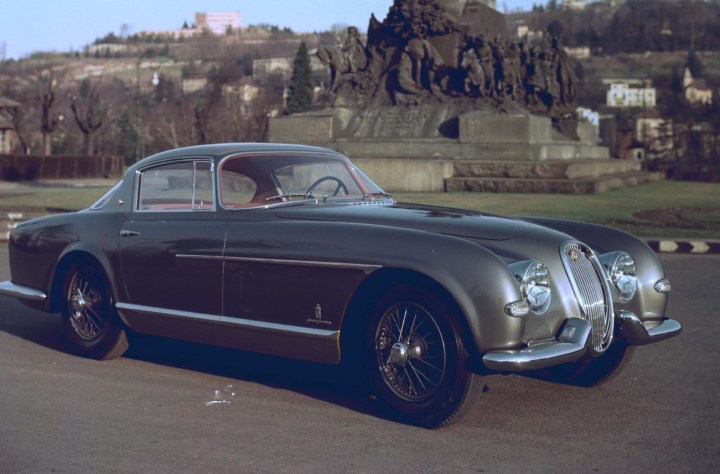
A British shop named Classic Motor Cars spent a whopping 6,725 hours restoring every single part of this car to like-new condition. The team in charge of the project started by stripping the XK down to the bare metal. Its one-off status complicated the task considerably because there are no blueprints or reference guides to rely on. Mechanics working on the car consequently had to take careful notes during disassembly, and photograph every component. Rust chewed away at the body so the front end, the rear quarter panels, the door skins, and the trunk floor were replaced with new sheet metal. The chassis was repaired, and the car was given a fresh coat of two-tone paint to highlight its Pininfarina-penned lines.
Then came the challenge of finding the parts that were missing, or too damaged to be repaired. Using photographs taken over the course of the car’s life, Classic Motor Sport re-manufactured the front and rear bumpers, which are specific to this car, and made mock-ups of the lights using a 3D printer. Some of the missing bits and pieces were also 3D-printed. This is clearly a technology that changes the way we restore cars; even big manufacturers are using it. And while we can’t 3D-print glass parts yet, 3D-scanning technology was used to reproduce the rear window.
The original upholstery was replaced with tan leather long ago, and the black-and-white photos of the car don’t shed much light on what the interior looked like over six decades ago. The team was lucky to find a small sample of the original leather upholstery when tearing down the car, however. And automotive archaeology told them exactly which type and color of leather they needed to reproduce.
There’s no sense in making a car look good if you can’t drive it, so the engine and the gearbox were completely rebuilt. Power for this stunning Jag comes from a XK 120-sourced 3.4-liter straight-six engine fed with a pair of carburetors. It makes 180 horsepower at 5,300 rpm, which was a jaw-dropping statistic in the 1950s. While it’s not the most powerful car Jaguar has ever built (that honor goes to the XE SVR Project 8), we bet this XK 120 sounds every bit as good as it looks.


